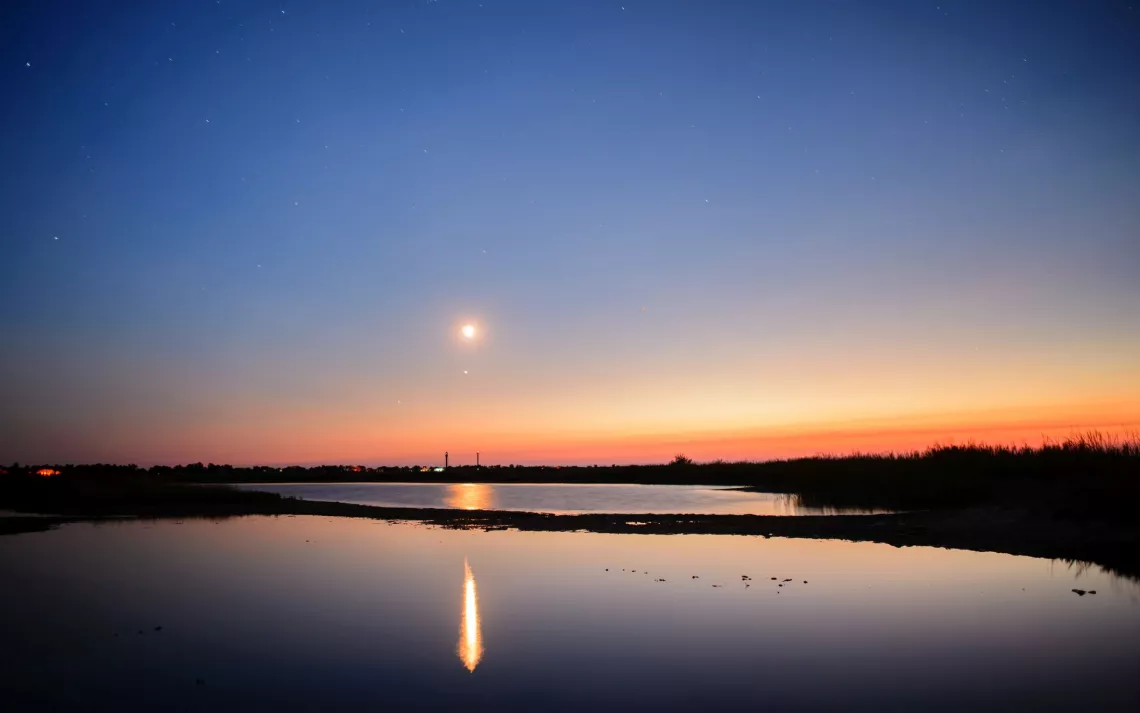June Astronomical Highlights: the Beehive Cluster and Blue Clouds
Stargazing ramps up this month as summer gets going

Photo by Sergii Kateryniuk/Istock
Although June is the month with the least amount of darkness, for many, stargazing ramps up this month. It’s finally warm enough in much of the United States to lounge outside, even at night. Barbecues, sports events, and other activities have people lingering in the great outdoors until after sunset, when they can watch the first stars appear.
The brightest point of light in the night sky in June, and therefore the first object to appear after dark, is Venus. You can find it in the west after sunset, starting the month in the constellation of Gemini and ending it in Cancer. Look for a pretty pairing of the crescent moon and Venus on June 15 and 16.
On June 19, Venus joins the stars of the Beehive Cluster, making for an impressive view through binoculars or a telescope. The Beehive Cluster goes by a couple of other names, including M44 and Praesepe, or the Manger. One of the first objects that Galileo studied with his telescope, the Beehive Cluster reveals sparkling stars under magnification. There are approximately 1,000 stars in this cluster, though only a fraction of them can be seen with amateur equipment (Galileo saw 40). At 600 light-years distant, this cluster is one of the closer collections of stars to us. At least three planets have been discovered orbiting stars of the Beehive Cluster.
Toward the end of June, another bright object becomes noticeable near the horizon, chasing Venus up into the sky after sunset. This fleet-footed planet is Mercury. You may be able to spot Mercury alongside a young moon on June 14. Mercury zips across Gemini and into Cancer by June 27, just before Venus leaves Cancer for Leo. Mercury will follow in Venus’s footsteps, mingling with the stars of the Beehive Cluster in early July.
On the opposite side of the sky from all this activity, Saturn is quietly emerging in the southeast. On June 27, the full moon and the ringed planet are just a degree apart. This is also the date when Saturn is at opposition, rising in the thick heart of the Milky Way, a short distance from the galactic center. Throughout the summer you can search out Saturn with optical aid and then scan nearby to see deep-sky wonders such as the Trifid Nebula, Lagoon Nebula, plus other star clouds and star clusters.
The Big Dipper changes location each season, and summer finds it nearly overhead. Use it to find other constellations—trace the shape of the curving handle to “arc to Arcturus,” a bright star in Bootes, and then “speed on down to Spica,” the brightest star in Virgo.
Make sure you aren’t confusing Jupiter with Spica this month, as the two are both bright objects that lie in the same region of the southern sky. On June 21, the moon is close to Spica, and on June 23, the moon comes within 5 degrees of Jupiter.
A few other June highlights are the summer solstice on June 21 at 3:07 A.M. PDT and the chance to see noctilucent clouds. Those in the northern tier of states have the best opportunity to witness the electric-blue, night-shining clouds high in the atmosphere that catch the sun’s rays even after the sun has set for those of us below on Earth’s surface. A month on either side of the summer solstice is prime noctilucent cloud season.
 The Magazine of The Sierra Club
The Magazine of The Sierra Club



